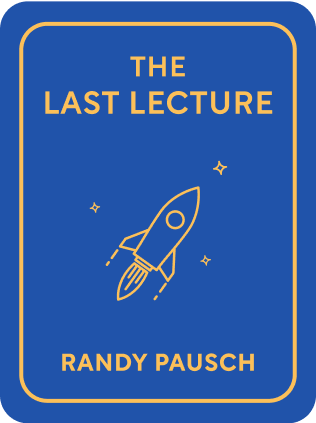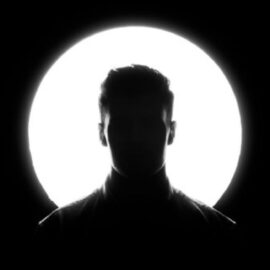

This article is an excerpt from the Shortform book guide to "The Last Lecture" by Randy Pausch. Shortform has the world's best summaries and analyses of books you should be reading.
Like this article? Sign up for a free trial here .
Are you looking for The Last Lecture book advice? Do you want to learn about Randy Pausch’s history and the life lessons he shared before he passed away?
The Last Lecture book goes over Randy Pausch’s childhood, his struggle with cancer, and the life lessons that he shared in his famous speech. His speech inspired thousands around the world to chase their dreams no matter what gets in their way.
Keep reading for The Last Lecture book lessons and outline.
The Last Lecture Book Overview
The Last Lecture book follows Randy Pausch, a computer science professor at Carnegie Mellon University, and recounts his life lessons and experiences. Written with reporter Jeffrey Zaslow, the best-selling book is an expanded version of a “Last Lecture” speech Pausch gave in 2007, after being diagnosed with pancreatic cancer.
The “Last Lecture” series was a tradition in which professors presented their philosophy of life, as if it were their last chance to share what was important to them. It truly was a last chance for Pausch, who had only months to live. But more importantly, the lecture was his legacy for his three young children, who would grow up without him there to guide them.
His book and lecture, which went viral and has been viewed by millions, are about living your dreams.
Diagnosis
The Last Lecture book begins with a background of Randy Pausch. In summer 2006, Pausch experienced pain in his upper abdomen followed by jaundice. He at first thought he had hepatitis, but CT scans showed a tumor on his pancreas. Of all cancers, pancreatic cancer is the most deadly; half die within six months of diagnosis and 96% die within five years.
Despite treatment, seven months later, in August 2007, tests showed that the cancer had metastasized to his liver. His doctor said he probably had three to six months of good health remaining.
The day before the checkup, Pausch had told his wife Jai that regardless of the test results, for the moment, it felt great to be alive and be with her. That’s how he decided to live the rest of his life—focusing on the moment.
Childhood Dreams in The Last Lecture Book
Pausch and his older sister grew up in a middle-class community in Columbia, Maryland (suburban Baltimore), the children of an English teacher and an auto insurance salesman. He credited his positive childhood for the fact that he went on to achieve his dreams and live a fulfilling life.
One of the biggest ways his parents impacted him was by encouraging his imagination. For example, they allowed Pausch and his sister to paint his bedroom while he was in high school. Among other things, he painted a quadratic equation, an elevator (the house actually had just one floor), a periscope, a Pandora’s box, a rocket ship, and chess pieces.
Pausch had six childhood dreams: Winning the biggest stuffed animals at the carnival, playing in the NFL, writing an entry in the World Book Encyclopedia, being Captain Kirk of Star Trek, experiencing zero gravity, and becoming a designer or “Imagineer” for Disney.
Pausch never lost touch with his childhood dreams and, in various ways, he achieved them all.
He titled his Last Lecture “Really Achieving Your Childhood Dreams.” In it, he advised listeners to carry around a Crayon as a reminder of childhood aspirations.
Captain Kirk
As a boy with an interest in science, Pausch loved the TV show Star Trek and its hero, Captain Kirk—as well as the show’s space-age gadgets, including pocket communications devices much like today’s smartphones. Pausch met his idol when actor William Shatner, the original Captain Kirk, visited his virtual reality lab at Carnegie Mellon. Shatner wanted to learn about the latest technology for a book he was co-authoring about Star Trek devices that foreshadowed real technological advances.
When Shatner later learned of Pausch’s diagnosis, he sent Pausch a signed photo of Kirk, inscribed with a line from the Star Trek movie The Wrath of Khan: “I don’t believe in the no-win scenario.”
Disney ‘Imagineer’
In this section of The Last Lecture book, Pausch made a memorable childhood trip to Disneyland in 1969 when he was eight. As his interest in science and engineering developed, he dreamed of designing Disney rides and attractions. Years later, after receiving a sabbatical for virtual reality research, he talked Disney into accepting him for six months to work on a secret Aladdin attraction involving a magic carpet ride.
He had some trouble getting a Carnegie Mellon dean to approve such an unconventional study request, but he persisted and his experience as an “Imagineer” was a highlight of his life. He wore his Disney Imagineer’s shirt when he delivered his Last Lecture.
Other Life Lessons
This part of The Last Lecture book goes over some of the life lessons Pausch taught. Besides discussing the importance of pursuing your childhood dreams, Pausch used his Last Lecture to recount other lessons he’d learned or taught throughout his life, including:
The Value of Honest Feedback: Pausch could be arrogant and tactless, but on one occasion, a mentor put him in his place. While Pausch was an undergraduate at Brown University, the faculty member told him it was a shame that people found him arrogant because it would hold him back in the future. Pausch concluded that he’d just been tactfully told he was a jerk. He came to appreciate those in his life who gave him honest feedback and he tried to do the same for his students.
People Over Things: Before he was married, Pausch enjoyed being an uncle to his sister’s two children. Once, when the kids were seven and nine, he picked them up in his new convertible. As they climbed in, their mother warned them not to get it dirty. Hearing this, Pausch opened a can of soda and calmly poured it onto the cloth-covered back seats. His message was that a car is just a possession—and people are more important than things. Later that weekend, when his nephew got the flu and threw up on the car seat, Pausch was glad he’d delivered that message.
Brick Walls Are Opportunities: Pausch learned to overcome obstacles in his academic career and came to believe that when you run into brick walls, they’re an opportunity for you to demonstrate how badly you want something.
But at age 37, he encountered one of his most formidable challenges—winning over the woman who eventually became his wife. He met Jai at the University of North Carolina at Chapel Hill, when he was invited to give a lecture. She was a graduate student there in comparative literature. They hit it off, but when he asked her to move to Pittsburgh, she refused him multiple times. At one point, she told him she didn’t love him. Distraught, he called his parents for advice and they told him to be patient and respectful of her feelings. Eventually, Jai realized she loved him and moved to Pittsburgh, where they were married. He’d used the brick wall of her resistance demonstrate how much he wanted a life with her.
Be a Tigger, Not an Eeyore: Pausch believed everyone has a choice in life to be like one of two Winnie-the-Pooh characters: you can be like fun-loving, exuberant Tigger or like gloomy Eeyore. Throughout his life, Pausch looked for the fun in everything—he didn’t see any benefit to being a sad Eeyore. After his cancer diagnosis, his Tigger persona helped him live his last days to the fullest.
Take the risk: When you’ve failed, you’ve learned something about how to succeed in the future. In fact, failing is such an integral part of success that Pausch liked to give an award for the most spectacular failure to student teams who took big creative risks and failed. He dubbed it the “First Penguin Award”—the name comes from the way one penguin in a flock always jumps into the water ahead of the others, taking the biggest risk of being eaten by predators.
Work hard: Although people often want to avoid work, there’s no benefit to taking a shortcut. The more you work, the more you learn about your subject or pursuit and the bigger the eventual reward. Work is like interest on your savings—it compounds. When Pausch received tenure earlier than is typical, colleagues wanted to know how he’d done it. In reply, he invited them to call him at 10 p.m. at his office on any Friday night—in other words, he worked hard for it.
Show gratitude: When people give you their time and attention, write them a thank-you note. You’ll stand out because thank-you notes are rare, which may benefit you in the future. But more importantly, showing gratitude is a sign of character. If you can’t adequately pay someone back for a kindness, pay it forward. Pausch made a point of showing gratitude in both large and small ways. For instance, he sent cookies to colleagues who reviewed journal articles for him. Also, after receiving tenure, Pausch thanked his research team for their contribution to his success by taking them on a week-long trip to Disney World.
Be both optimistic and realistic: Well-meaning friends sometimes tell cancer patients to be optimistic or their treatments will fail. As a result, when they have setbacks or bad days, patients feel guilty for not being positive enough. However, optimism must be coupled with realism. Pausch believed he could be realistic about his condition, but also be optimistic that he could do things to improve how he felt and continue to find joy in daily life.
The Truth About Dreams
Pausch felt it was important not to impose his own dreams on his children, but to let them discover their own paths. As a professor, he’d counseled many students who had chosen majors that pleased their parents and ended up being miserable. His message was: be what you want to be. Pursue your own dreams and do what brings you joy, regardless of anyone’s expectations.
Achieving your dreams, he said, isn’t so much about chasing them as about living your life in the right way. If you do that, “your dreams will come to you.”
Randy Pausch died on July 25, 2008, at age 47.

———End of Preview———
Like what you just read? Read the rest of the world's best book summary and analysis of Randy Pausch's "The Last Lecture" at Shortform .
Here's what you'll find in our full The Last Lecture summary :
- What Randy Pausch's philosophy of life was
- How a professor with only months to live recounted his life's experiences and lessons
- How a computer science professor ended up on a secret project with Disney






